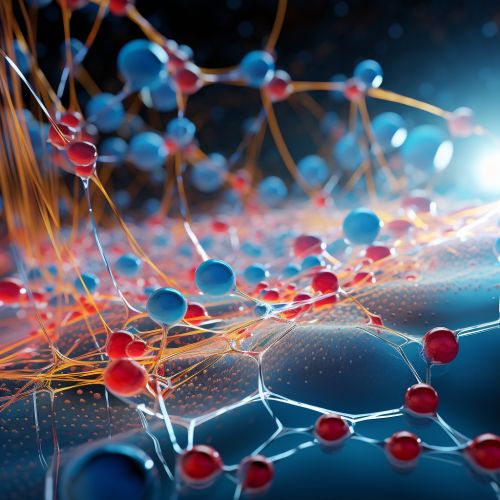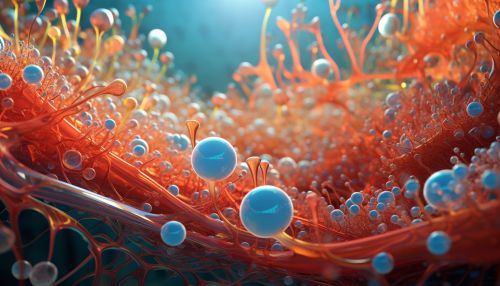Signal Transduction in Cell Communication
Introduction
Signal transduction is the process by which a chemical or physical signal is transmitted through a cell as a series of molecular events, most commonly protein phosphorylation catalyzed by protein kinases, which ultimately results in a cellular response. Proteins responsible for detecting stimuli are generally termed receptors, although in some cases the term sensor is used. The changes elicited by ligand binding (or signal sensing) in a receptor give rise to a signaling cascade, a chain of biochemical events along a signaling pathway.


Types of Signal Transduction
Signal transduction can be divided into the following broad categories:
Intracrine
Intracrine signals are produced by the target cell, stay within the target cell, and influence that same cell. Intracrine ligand molecules bind to intracellular receptors. A common example of this type of signaling is the process of steroid hormone signaling.
Autocrine
Autocrine signals are produced by the target cell, are secreted, and affect the target cell itself via receptors. Autocrine signaling is a form of signaling in which a cell secretes a hormone or chemical messenger that binds to autocrine receptors on the same cell, leading to changes in the cell.
Juxtacrine
Juxtacrine signals target adjacent (touching) cells. These signals are transmitted along cell membranes via protein or lipid components integral to the membrane and are capable of affecting either the emitting cell or cells immediately adjacent.
Paracrine
Paracrine signals target cells in the vicinity of the emitting cell. Neurotransmitters represent a classical example of paracrine signals. Some signaling molecules can function as both a hormone and a neurotransmitter. For example, epinephrine and norepinephrine can function as hormones when released from the adrenal gland and are transported to the heart by way of the blood stream. Norepinephrine can also be produced by neurons to function as a neurotransmitter within the brain.
Endocrine
Endocrine signals target distant cells. Endocrine cells produce hormones that travel through the blood to reach all parts of the body.
Signal Transduction Pathways
Signal transduction pathways allow the cell to respond to signals. The ability of cells to perceive and correctly respond to their microenvironment is the basis of development, tissue repair, and immunity, as well as normal tissue homeostasis. Errors in signaling interactions and cellular information processing are responsible for diseases such as cancer, autoimmunity, and diabetes.
G Protein-Coupled Receptors
G protein-coupled receptors (GPCRs) are a large family of cell surface receptors that respond to a variety of external signals. Binding of a signaling molecule to a GPCR results in G protein activation, which in turn triggers an intracellular signaling cascade.
Receptor Tyrosine Kinases
Receptor tyrosine kinases (RTKs) are high-affinity cell surface receptors for many polypeptide growth factors, cytokines, and hormones. RTKs have been shown not only to be key regulators of normal cellular processes but also to have a critical role in the development and progression of many types of cancer.
Ion Channel-Linked Receptors
Ion channel-linked receptors, also known as ligand-gated ion channels, allow ions to pass through the channel pore. Their functions are critical for the biological behaviour of excitable cells like neurons.
Conclusion
Signal transduction is a fundamental process in biology that allows cells to perceive and respond to their environment. Understanding the mechanisms of signal transduction is crucial for understanding many biological processes and diseases, including cancer and diabetes.
